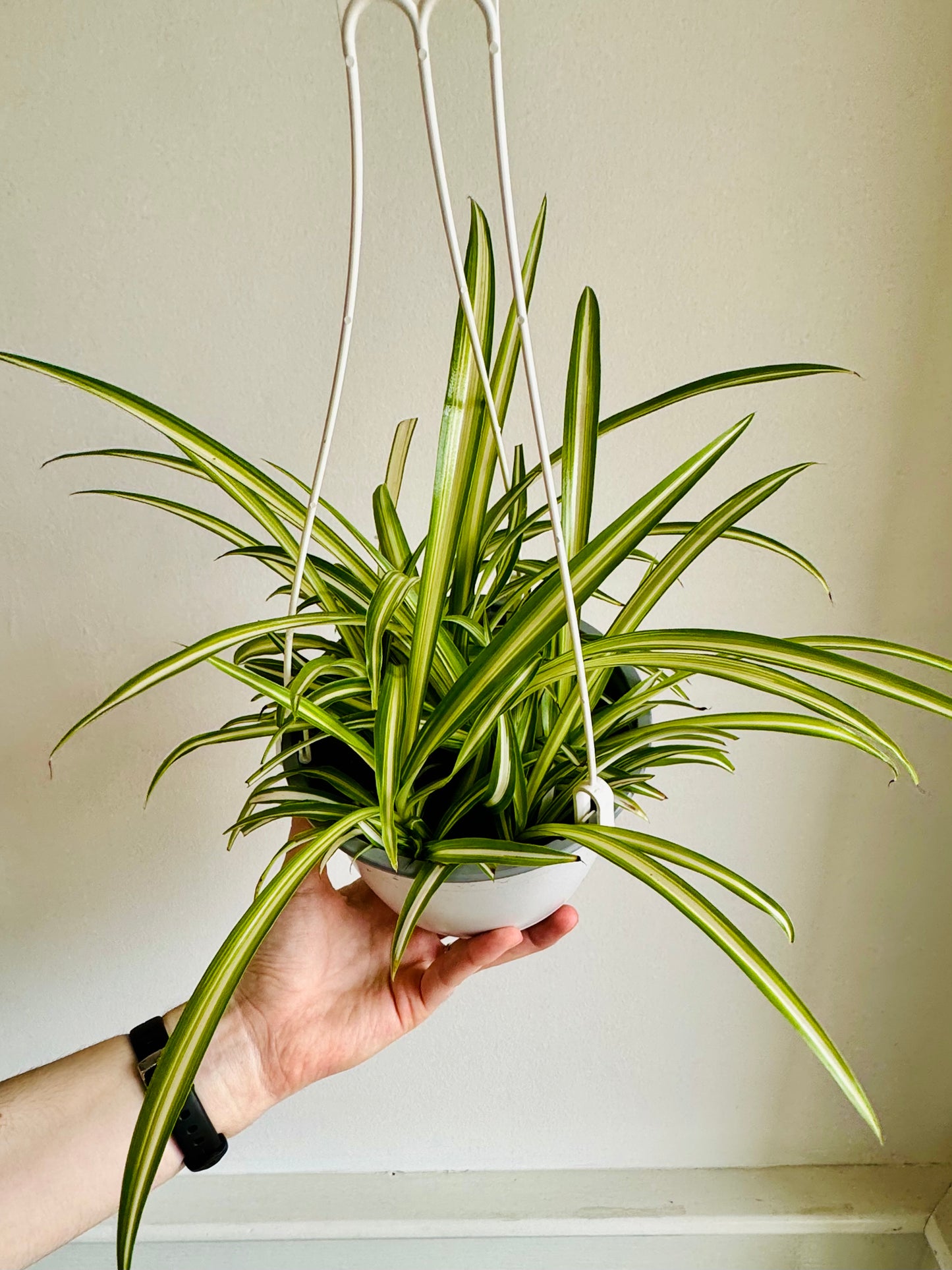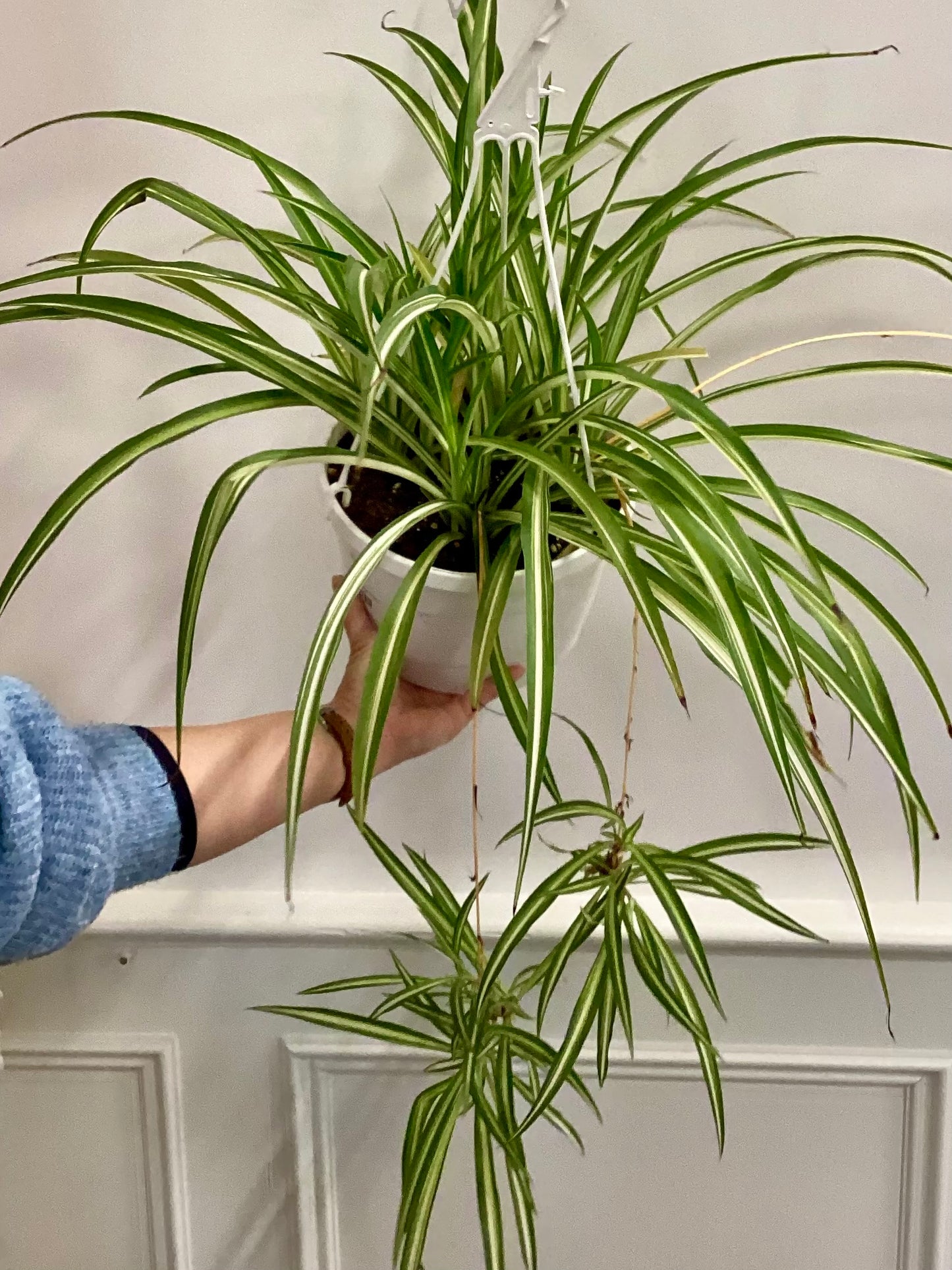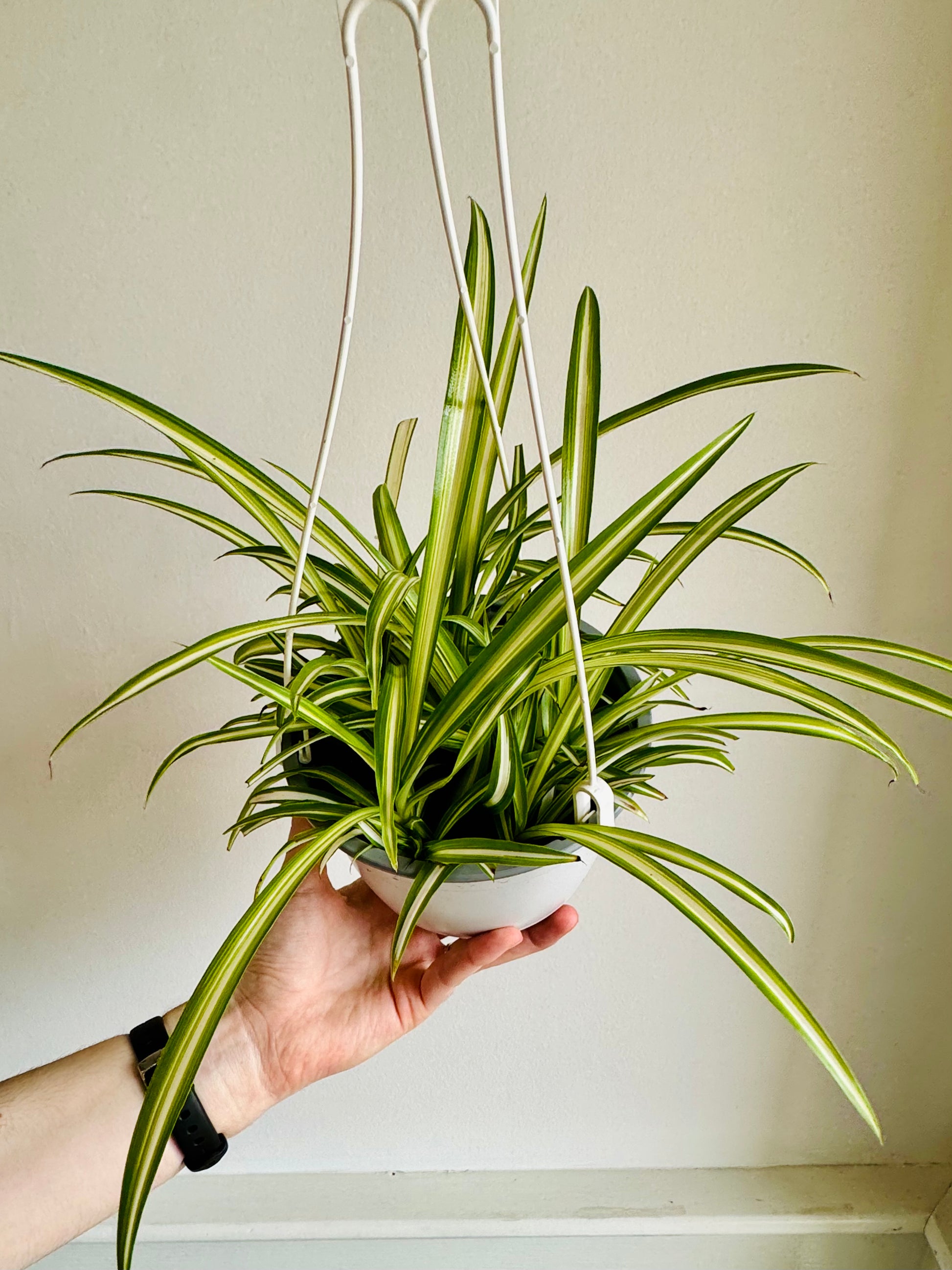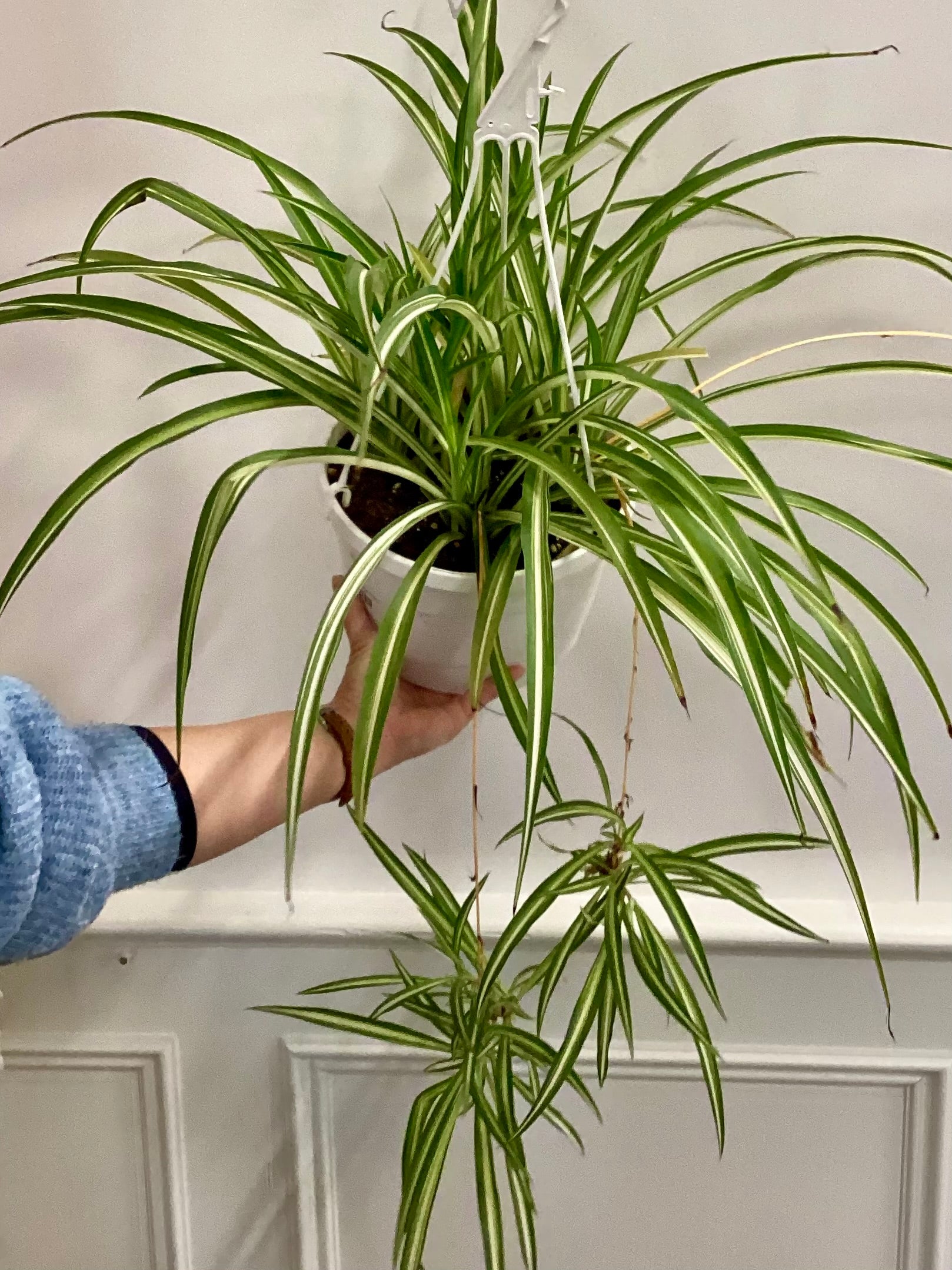Spider Plant Hanging Basket Veriegated
Spider Plant Hanging Basket Veriegated
Couldn't load pickup availability
Spider Plant Hanging Basket
Spider plants, scientifically known as Chlorophytum comosum, are popular and easy-to-care-for houseplants appreciated for their attractive foliage and air-purifying qualities. Here's some information about spider plants:
Appearance: Spider plants are characterized by their long, arching leaves that grow in a rosette pattern from a central crown or base. The leaves are typically green with white or creamy stripes along the edges, although there are also varieties with solid green or variegated leaves. Spider plants often produce long, trailing stems with small plantlets (spiderettes) that form at the ends, giving them a spider-like appearance.
Native Habitat: Spider plants are native to tropical and subtropical regions of Africa, where they grow as ground cover in forested areas. They are well-adapted to low light levels and can tolerate a wide range of environmental conditions.
Growing Conditions:
- Light: Spider plants prefer bright, indirect light but can tolerate lower light conditions. They should be placed near east or west-facing windows where they can receive moderate sunlight.
- Temperature: Spider plants prefer temperatures between 60°F to 75°F (15°C to 24°C). They can tolerate slightly cooler temperatures but should be protected from drafts and temperature extremes.
- Watering: Spider plants prefer consistently moist soil but can tolerate occasional drying out between waterings. Water them thoroughly when the top inch of soil feels dry to the touch, allowing excess water to drain from the bottom of the pot.
- Humidity: Spider plants can tolerate average indoor humidity levels but benefit from occasional misting or placing the pot on a humidity tray to increase humidity levels.
- Soil: Plant spider plants in a well-draining potting mix rich in organic matter. A peat-based potting mix with perlite or vermiculite works well.
- Fertilization: Feed spider plants with a balanced, water-soluble fertilizer diluted to half strength every 4 to 6 weeks during the growing season (spring and summer). Reduce or stop fertilizing during the fall and winter months.
Propagation: Spider plants are easy to propagate through division or by planting the plantlets (spiderettes) that form at the ends of trailing stems. Simply cut off the plantlets and plant them in pots with well-draining soil. They will root and grow into new plants.
Maintenance: Spider plants are relatively low-maintenance and require minimal pruning. Remove any dead or yellowing leaves regularly to maintain the plant's appearance. Trim back long, trailing stems if desired to encourage bushier growth.
Air Purification: Spider plants are known for their air-purifying qualities. They can help remove harmful toxins such as formaldehyde, xylene, and carbon monoxide from indoor air, making them a popular choice for indoor spaces.
Overall, spider plants are versatile and attractive houseplants that are well-suited to a wide range of indoor environments. With their unique foliage and easy-care nature, they are a favorite among both beginner and experienced plant enthusiasts.
Share




